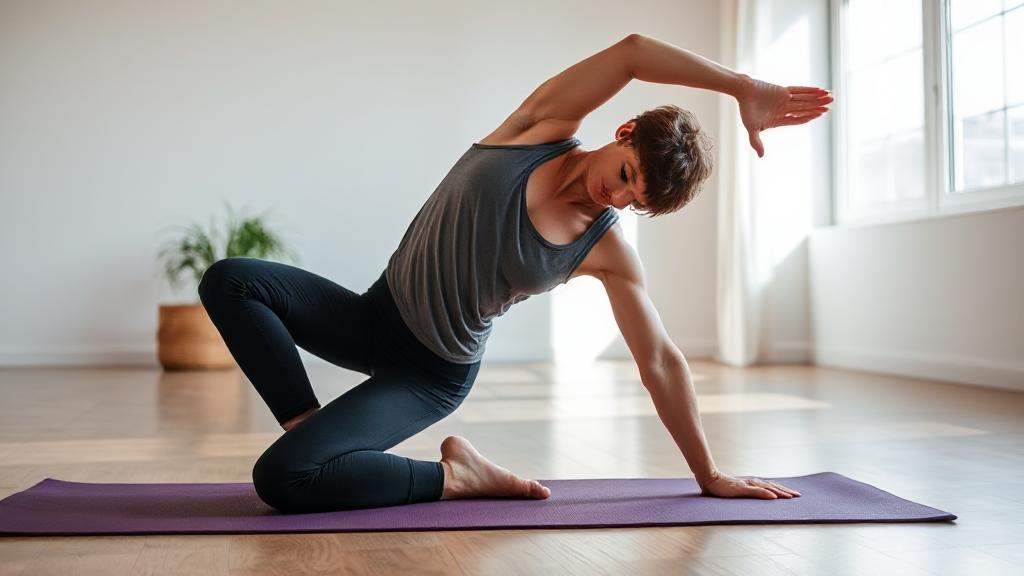Introduction
Flexibility is a foundational pillar of physical fitness, yet it’s often overshadowed by strength or endurance training. Whether you’re an athlete, a desk worker, or simply seeking to move more comfortably, improving your flexibility can yield significant benefits—from reducing injury risk and muscle soreness to enhancing posture and overall well-being. In this article, we’ll explore effective, evidence-based strategies to help you become more flexible every day.
Why Flexibility Matters
Flexibility refers to the ability of your joints and muscles to move through their full range of motion. Good flexibility can:
- Reduce muscle stiffness and soreness
- Improve posture and alignment
- Enhance athletic performance
- Decrease the risk of injuries
- Promote better blood circulation
- Support daily functional movements
For more on the importance of flexibility, see the American Council on Exercise’s guide.
Types of Flexibility and Stretching
Understanding the different types of flexibility and stretching techniques is key to designing an effective routine:
| Technique | Description | Best For |
|---|---|---|
| Static | Holding a stretch for 15–60 seconds | General flexibility, cool-down |
| Dynamic | Moving through a range of motion (e.g., leg swings, arm circles) | Warm-up, sports preparation |
| PNF | Contract-relax method, often with a partner | Advanced flexibility gains |
| Active | Using opposing muscles to deepen a stretch | Functional flexibility |
| Ballistic | Bouncing movements | Not recommended for most people |
Learn more about dynamic stretching and static stretching.
Effective Strategies to Improve Flexibility
1. Warm Up Before Stretching
Never stretch cold muscles. A proper warm-up increases blood flow, making muscles more pliable and less prone to injury. Try 5–10 minutes of light cardio, such as brisk walking or jumping jacks, before stretching.
2. Incorporate Dynamic Stretching
Dynamic stretches are ideal as a warm-up before workouts. Examples include:
- Arm circles
- Leg swings (forward and sideways)
- Walking lunges
- Torso twists
3. Practice Static Stretching
Static stretching is best performed after workouts or when muscles are warm. Hold each stretch for 15–60 seconds, repeating 2–4 times per muscle group. Examples:
- Hamstring stretch
- Quadriceps stretch
- Shoulder stretch
4. Explore Yoga and Pilates
Both yoga and Pilates are excellent for improving flexibility, balance, and strength. Yoga styles such as Hatha, Vinyasa, and Yin Yoga are particularly effective. For beginners, Yoga With Adriene offers accessible routines.
- Learn more about the benefits of mindfulness meditation and beginner meditation practices.
5. Try Proprioceptive Neuromuscular Facilitation (PNF)
PNF stretching involves contracting and relaxing muscles to achieve a deeper stretch. It’s more advanced and often requires a partner or a strap. Learn more about PNF techniques.
6. Use Foam Rolling (Self-Myofascial Release)
Foam rolling helps release muscle tightness and improve blood flow, making stretching more effective. Focus on major muscle groups like calves, quads, and back. See foam rolling techniques.
- For more on reducing muscle soreness, check out effective ways to reduce muscle soreness after exercise.
7. Stay Consistent
Consistency is crucial. Aim to stretch or perform flexibility exercises at least 3–5 times per week. Set reminders, incorporate stretching into your daily routine, and track your progress for motivation.
Sample Flexibility Routine
| Exercise | Type | Duration/Rep |
|---|---|---|
| Arm Circles | Dynamic | 10 reps |
| Walking Lunges | Dynamic | 10 reps |
| Hamstring Stretch | Static | 30 sec/leg |
| Cat-Cow Pose | Yoga | 10 reps |
| Foam Rolling Quads | Myofascial | 1 min/leg |
Supporting Lifestyle Factors
Flexibility isn’t just about stretching. Consider these additional factors:
- Hydration: Well-hydrated muscles are more elastic. Drink plenty of water throughout the day.
- Nutrition: Anti-inflammatory foods (berries, fatty fish, turmeric) can help reduce muscle soreness. Learn more about reducing inflammation naturally.
- Active Lifestyle: Regular movement maintains joint mobility. Avoid prolonged periods of inactivity.
- Mindfulness: Being aware of your posture and movement can help identify and address areas of tightness. See effective strategies to improve your posture every day.
Common Mistakes to Avoid
- Skipping warm-ups: Stretching cold muscles can lead to injury.
- Bouncing during stretches: This can cause muscle strain.
- Overstretching: Listen to your body and avoid pushing into pain.
- Inconsistency: Sporadic stretching won’t yield significant results.
- Forgetting to breathe: Deep, relaxed breathing helps muscles release tension.
Integrating Flexibility into Your Routine
- Morning Routine: Start your day with a brief stretching sequence to energize your body. Learn about the benefits of establishing a morning routine.
- Evening Wind-Down: Stretch when your body is warm to help relax and prepare for sleep. For more, see effective strategies to improve your sleep quality.
- Throughout the Day: Take short stretch breaks if you sit for long periods. For tips on staying focused, read how to stay focused when distractions take over.
When to Seek Professional Help
If you experience persistent pain, have recent injuries, or medical conditions affecting your joints or muscles, consult a physical therapist or certified instructor for personalized guidance. For chronic pain management, see effective strategies for managing chronic pain.
Conclusion
Improving flexibility is a gradual, rewarding process that requires patience and dedication. By incorporating dynamic and static stretching, exploring yoga or Pilates, using foam rolling, and supporting your efforts with healthy lifestyle choices, you’ll enjoy greater range of motion, reduced stiffness, and enhanced overall well-being.
For more in-depth information, visit Mayo Clinic’s stretching basics.
Start today, and enjoy the journey toward a more flexible, resilient you!
